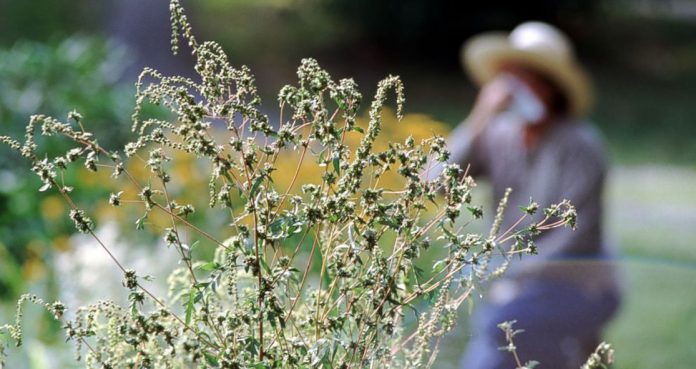The allergy season is here and it has already affected states such as Georgia and Tennessee. It is more brutal in Chicago where the extremely cold winter has delayed the onset. Weather forecasters expect 2019 to be one of the worse years than ever.
Pollen is one of the triggering factors causing hay fever for one in five Americans, which has been increasing year after year. And the most important factor behind this surge is nothing but the climate change. The changes in climate have affected the ragweed pollen season from 1995 to 2015.
According to a new study published in the journal Lancet Planetary Health, pollen counts have been increasing across the globe due to a rise in average temperatures every year. And faster climatic changes are making things worse than usual. For instance, Alaska has been facing a high allergy risk because its climate is warming twice as fast as the overall average.
Seasonal allergies present one of the most prominent examples of how global warming is increasing the risk of health issues. Allergies are responsible for causing health issues, and they will continue to do so in the future.
Director of the Allergy, Asthma, and Immunology Center of Alaska Jeffrey Demain said, “It’s very strong. In fact, I think there’s irrefutable data. It’s become the model of health impacts of climate change.”
Scientists have figured out that allergies occur when the internal radar system of the body locks onto the wrong target/substance, such as pollen, the immune system of the body causes annoyances by overreacting to that substance.
The higher concentration of pollens causes allergy reaction, which takes up the form of hives or itchy eyes, or sometimes life-threatening events such as anaphylaxis.
Pollen is a fine powder that is produced at the time of sexual reproduction of a variety of plants, including elm trees, ryegrass, and ragweed.
A massive cloud of pollen drifts from the trees in a coniferous forest in many states. The climate changes such as rising temperature, sunlight, and precipitation cause this reaction. Grains of pollen can travel deep into the lungs and cause irritation, even if the person is non-allergic.
Pollen season is emerging earlier year by year and is taking longer to end-up, especially pollen from ragweed.
Ragweed is an annual plant and its available throughout the year, this makes it handy for studying its pollen’s impacts on climate. Scientists can separate out how various factors like winter and rainfall in the preceding season influence pollen.
According to the study, higher carbon dioxide concentrations in air encourage plants to produce more pollen.
It is noticed that higher concentration of pollen means the higher number of seeds and ultimately, more ragweed. If the temperature is warm, the spring is about to start soon and winter arrives late. This gives more time to pollen producers to give away their particles in the air.
Lewis Ziska, a research plant physiologist at the US Department of Agriculture stated, “What happens is if the tree during the previous year has had a ‘good season,’ it tends to load up on carbs so that in the spring, it has a lot of carbs to put out for flower production. When that happens, you can get a large bloom, and the consequences of that are inherent in the amount of pollen that’s being produced.”
Glaciers are warming so fast that it’s a hard time believing the results and that is causing huge consequences for allergy sufferers in the state, in addition to pollen. It is also causing moisture to seep indoors and mold allergies being seen in people beneath Alaskan towns.
There is another reason why pollen remains a huge concern in Alaska. It is due to the main source of birch trees. Birch pollen can get so bad that even people with no allergies get bogged down.
Demain added, “For a ‘high’ pollen count, you need greater than 175 grains per cubic meter. In Alaska, we get highs between 2,000 and 4,000 grains per cubic meter.”
According to Demain, carbon dioxide concentrations rises the allergenic peptides on pollen. The peptides trigger the body’s immune system since more peptides on a given pollen grain more severe the allergy is.
Therefore, not only the higher concentration or large quantity pollens is causing allergies but also the pollen itself is more responsible for such reaction.
So, it is not just more pollen; the pollen itself is becoming more potent in causing an immune response. Scientists estimate that pollen concentration of all varieties will double by 2040 in some parts of the country because of greenhouse gas emissions.























